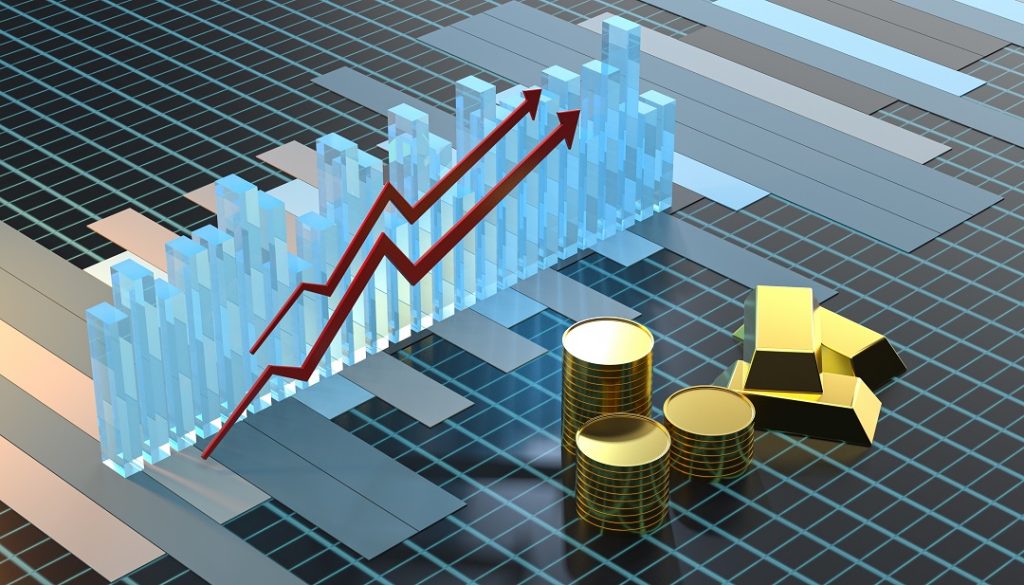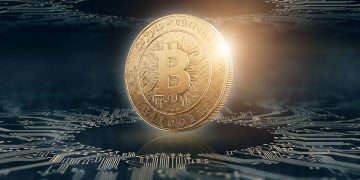Introduction: The Uncertain Path of Global Economic Recovery
The global economy has been navigating a tumultuous journey in recent years, driven by the unprecedented challenges posed by the COVID-19 pandemic, geopolitical tensions, and rising inflation. As the world gradually emerges from the pandemic’s shadow, the big question on the minds of economists, businesses, and investors alike is: How fast is the global economy recovering, and can the growth be sustained in the long term?
The post-pandemic recovery has been uneven, with developed economies showing more resilience compared to emerging markets, which are still grappling with both the immediate fallout of the pandemic and the broader global economic challenges. At the same time, global inflation remains a pressing issue, along with the tightening of monetary policies by central banks worldwide, which could have long-term effects on growth prospects.
In this article, we will explore the current state of the global economic recovery, the key drivers behind the resurgence in economic activity, and the challenges that lie ahead. More importantly, we will analyze whether the current growth trend can be maintained in the face of evolving risks and uncertainties.
Chapter 1: The Post-Pandemic Global Recovery – Where Do We Stand?
The global economy contracted sharply in 2020 due to the pandemic, with countries around the world imposing lockdowns, travel restrictions, and social distancing measures to curb the spread of the virus. The International Monetary Fund (IMF) reported a contraction of around 3.5% in global GDP in 2020. However, by 2021 and 2022, many economies began to recover as vaccination campaigns rolled out, restrictions were lifted, and businesses adapted to new ways of working.
1. Uneven Recovery: Developed vs. Emerging Economies
The recovery has been anything but uniform across different regions. While advanced economies have shown a quicker rebound, emerging markets have faced greater challenges due to a combination of factors, including slower vaccination rates, weaker healthcare infrastructures, and higher dependency on global trade.
- Developed Economies: The U.S., Europe, and parts of Asia (especially Japan and South Korea) have generally been at the forefront of the recovery. With strong fiscal and monetary support, these economies have seen robust GDP growth rates in 2021 and 2022. The U.S. economy, for example, grew by 5.7% in 2021, following a contraction of 3.4% in 2020. However, as inflationary pressures have mounted and central banks have begun to raise interest rates, growth expectations have been tempered for 2023.
- Emerging Markets: Emerging economies, particularly those in Latin America, Africa, and parts of Asia, have experienced a slower recovery. Many of these regions are still grappling with the impacts of the pandemic on their labor markets, fiscal deficits, and inflation. Moreover, these economies have been disproportionately affected by global supply chain disruptions and rising commodity prices. Countries such as India and Brazil have seen lower growth rates compared to developed nations.
2. Key Drivers of the Recovery
Several factors have fueled the global economic recovery, including:
- Monetary and Fiscal Stimulus: The aggressive monetary policies implemented by central banks, particularly in the U.S. (Federal Reserve), the Eurozone (ECB), and other developed markets, have played a crucial role in supporting the global economy. Interest rates were slashed to near-zero levels, and large-scale fiscal stimulus packages were introduced to support businesses and households. These measures have provided much-needed liquidity to the market, allowing for a quicker rebound in consumption and investment.
- Vaccination Campaigns: The rapid rollout of vaccines and the subsequent easing of restrictions allowed businesses to reopen, and consumer confidence to gradually return. The ability to travel, dine out, and return to work in person has fueled economic activity, particularly in the service sector, which had been the hardest hit during the pandemic.
- Adaptation to New Norms: Businesses and industries have adapted to a new set of operational norms, driven by technology and digitalization. Remote working, e-commerce, and automation have allowed companies to maintain operations in a constrained environment. In many cases, these changes have driven productivity gains and cost reductions, contributing to economic resilience.
3. The Role of Supply Chains in the Recovery
While demand has surged, global supply chains have struggled to keep pace with the rebound. Supply chain disruptions have been a major constraint on the recovery, with shipping delays, semiconductor shortages, and labor shortages continuing to hamper production. The global semiconductor shortage, in particular, has had a ripple effect on industries ranging from consumer electronics to automotive manufacturing.
The pandemic also revealed the vulnerability of highly integrated global supply chains, prompting many companies to consider reshoring or diversifying production to ensure greater supply chain security. These changes could lead to long-term shifts in how global supply chains are structured, which may either bolster or impede future economic growth, depending on how well these adjustments are managed.
Chapter 2: Key Challenges Facing Global Economic Growth
While the recovery story has been positive overall, there are several challenges that could hinder the sustainability of global growth. These risks must be carefully monitored, as they could delay or even reverse the current trajectory of recovery.
1. Rising Inflation and Tightening Monetary Policies
One of the most significant challenges facing the global economy today is the persistent rise in inflation. In both developed and emerging economies, prices have surged for commodities, food, energy, and housing. For instance, in 2022, U.S. inflation reached a 40-year high at 8.5%, driven by supply shortages, rising energy prices, and labor market tightness. Similarly, inflation in the Eurozone has been above 5%, with energy prices leading the way.
To counteract rising inflation, central banks worldwide are tightening monetary policy. This includes raising interest rates and, in some cases, reducing the size of their balance sheets by stopping the purchase of government bonds (quantitative tightening).
While these actions are necessary to contain inflation, they can also have a cooling effect on economic growth. Higher interest rates make borrowing more expensive for both consumers and businesses, which could dampen investment and consumption. Additionally, rising borrowing costs could lead to increased debt servicing burdens for governments and corporations, putting further strain on global markets.
2. Global Debt Levels
The global debt burden has soared in recent years, partly due to the pandemic-related fiscal stimulus measures and ultra-low interest rates. According to the Institute of International Finance (IIF), global debt reached a record $303 trillion in 2021, nearly 350% of global GDP. While governments and businesses have been able to service debt in the low-interest-rate environment, higher rates could make it more difficult to manage this debt load.
This growing debt load is particularly concerning in emerging markets, where governments and companies have more limited access to capital. Higher global interest rates could lead to capital outflows, currency depreciation, and even defaults in some of the most vulnerable countries.
3. Geopolitical Tensions and Global Instability
Geopolitical instability continues to be a major risk factor for the global economy. The ongoing Russia-Ukraine conflict has disrupted energy markets, particularly in Europe, while heightening fears of further conflict in other regions. Additionally, tensions between major economies, including the U.S. and China, have raised concerns about the future of international trade, technology, and global supply chains.
Geopolitical risks can have an outsized impact on market sentiment and economic stability. If tensions escalate or new conflicts arise, the global economy could face setbacks in the form of disrupted trade, higher commodity prices, or even global supply chain breakdowns.
4. Climate Change and Environmental Challenges
Climate change is increasingly being recognized as an existential threat to long-term economic growth. Extreme weather events, such as hurricanes, floods, and wildfires, are becoming more frequent and intense, disrupting local economies and supply chains. Moreover, transitioning to a green economy involves significant upfront investment in renewable energy, infrastructure, and technology, which may strain fiscal budgets and corporate balance sheets.
The shift toward sustainable development and environmental stewardship could create new growth opportunities in the clean energy and technology sectors, but the transition will require considerable investment and policy coordination. Failure to address climate risks adequately could undermine the long-term prospects for global growth.

Chapter 3: Will the Global Economic Growth Be Sustainable?
The global economic recovery has shown strong momentum, but whether this growth can be sustained depends on how the world addresses the key challenges outlined above. Several factors will play a role in determining the future path of the global economy:
1. Policy Coordination and Stability
Governments and central banks will need to strike a delicate balance between fostering economic growth and controlling inflation. This will require careful coordination of fiscal and monetary policies. Governments must also ensure that their stimulus measures do not exacerbate debt burdens or contribute to rising inflation in the long term.
2. Structural Reforms for Growth
To sustain long-term growth, economies must undertake structural reforms that boost productivity, innovation, and investment in key sectors. These reforms could include strengthening education systems, improving digital infrastructure, fostering green technologies, and enhancing labor market flexibility. Countries that can successfully adapt to these changes will be better positioned to maintain robust economic growth.
3. Embracing Technological Advancements
Technological innovation remains a key driver of global economic growth. The ongoing digital transformation of industries, fueled by advancements in artificial intelligence, blockchain, and automation, holds the potential to create new economic opportunities. However, this will also require significant investment in research and development, as well as policies that support entrepreneurship and innovation.
4. Navigating Global Risks
Finally, the global community must work together to address the most pressing risks, including geopolitical instability, climate change, and supply chain disruptions. The COVID-19 pandemic demonstrated the importance of global cooperation in addressing global challenges. By working together, nations can enhance the resilience of the global economy and foster a more sustainable recovery.
Conclusion: The Road Ahead for Global Growth
The pace of global economic recovery has been promising, but the road to sustained growth is filled with challenges. Rising inflation, tightening monetary policies, geopolitical risks, and environmental concerns all pose significant risks to the long-term trajectory of the global economy.
However, with the right policy responses, structural reforms, and investments in innovation, it is possible to build a resilient and sustainable growth model for the future. The global economy has shown remarkable adaptability in the face of unprecedented disruptions, and while uncertainty remains, there is still significant potential for continued recovery and growth in the years ahead. The question is not whether the global economy can recover, but how well it can adapt to the evolving challenges it faces.
Investors, businesses, and governments must remain vigilant and proactive in addressing these risks. The future of global growth will depend on how well these challenges are managed and how quickly economies can pivot to new sources of sustainable growth.


















































